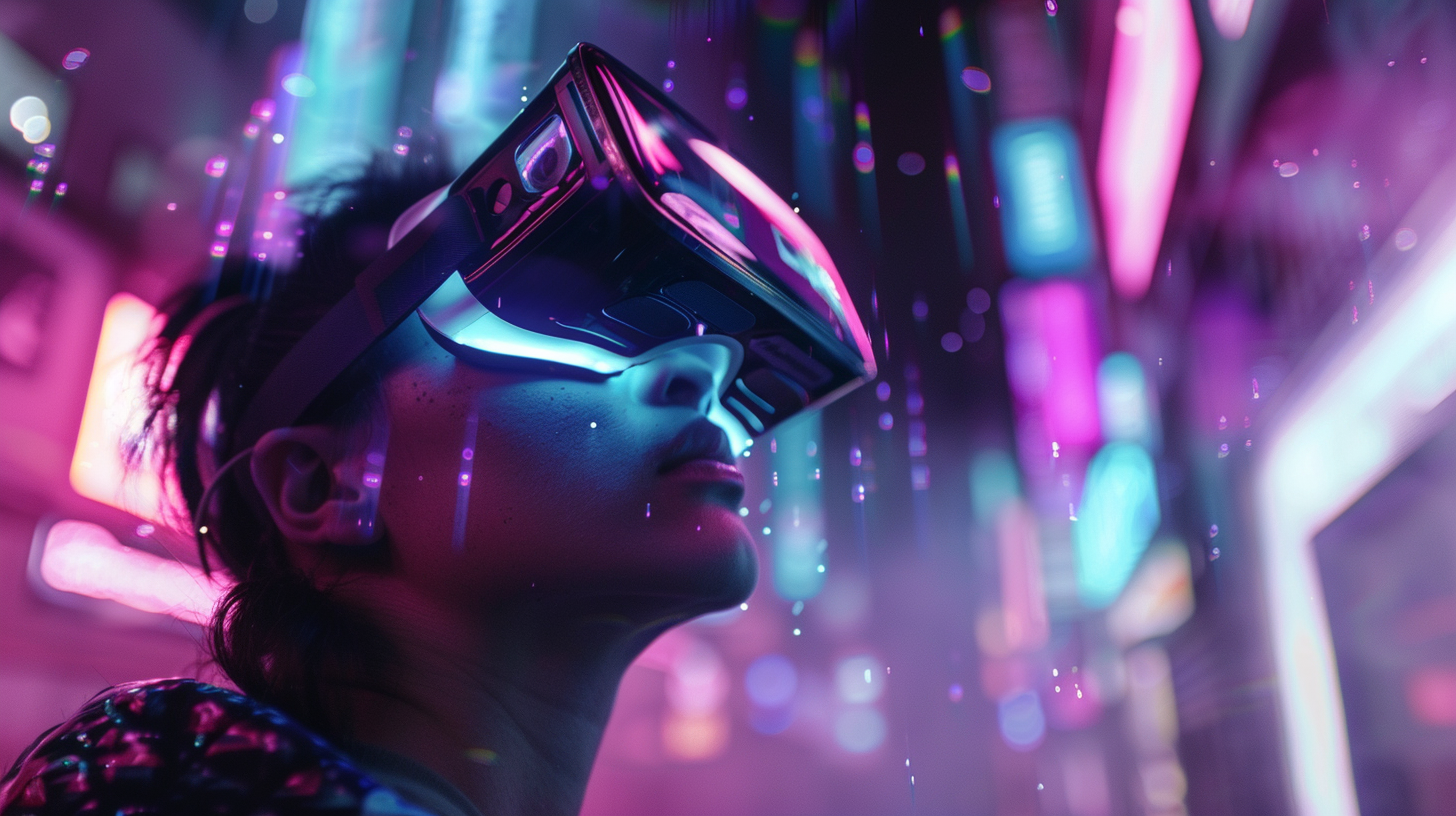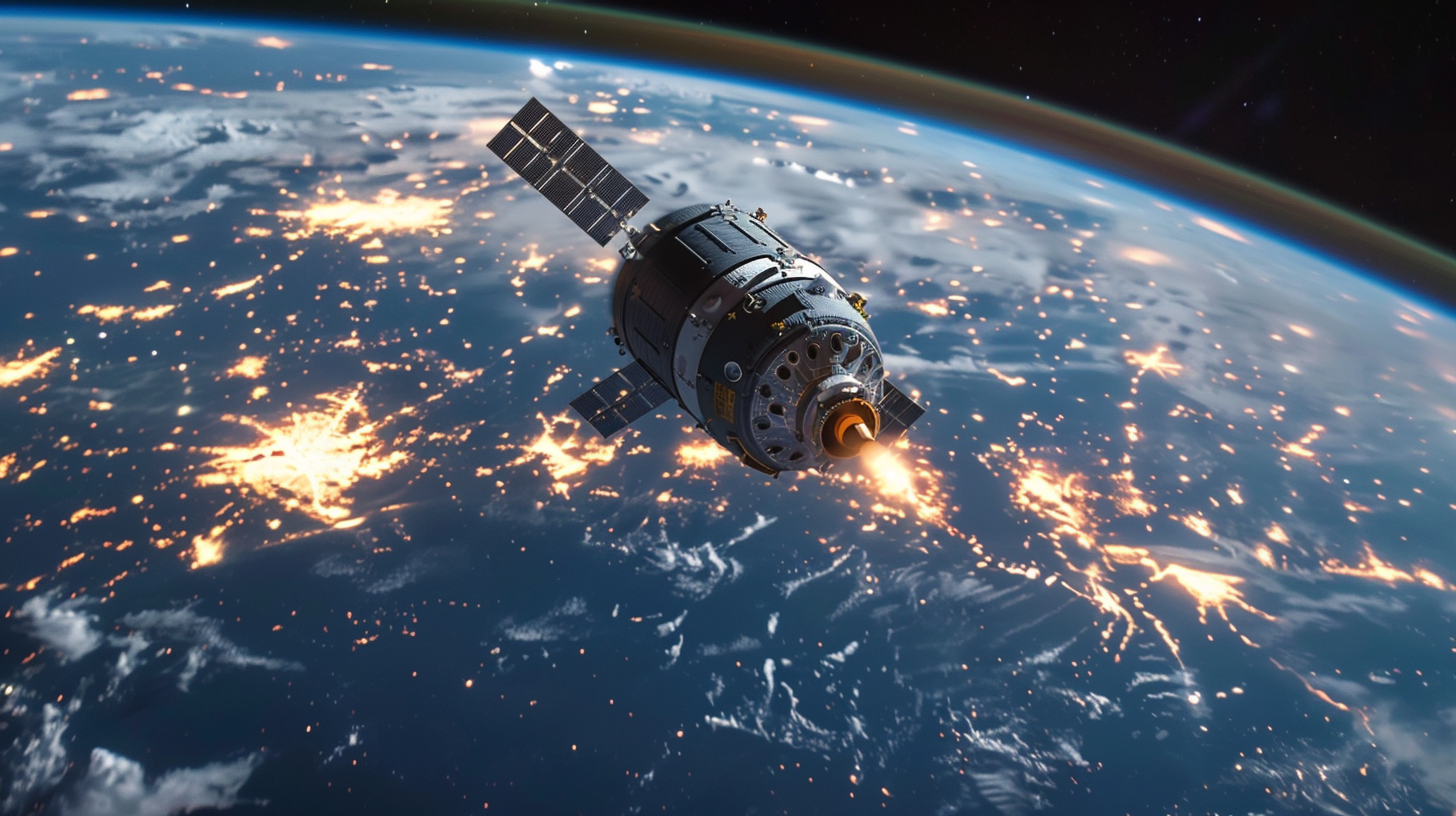Table of Contents Show
In today’s world, technology and art have collided with the force of a supernova, transforming the landscape of modern entertainment beyond recognition. We’re witnessing an era where virtual reality, artificial intelligence, and immersive technologies are not just tools but co-creators in the artistic process, offering experiences that were once the stuff of science fiction. From the way stories are told to how art is experienced, the fusion of these domains raises questions about the future of creativity itself. Let’s explore this thrilling frontier together, where the possibilities are as limitless as our imagination, and discuss what lies beyond this innovative horizon.
Key Takeaways
- Technology, like VR and AI, is transforming art and entertainment, making experiences more immersive and interactive.
- Advancements in audio technology are enhancing the realism and depth of entertainment experiences, creating more engaging auditory landscapes.
- Interactive and participatory formats are breaking traditional spectator roles, allowing audiences to become part of the art and storytelling.
- The evolution of technology in art, from analog to digital and beyond, is revolutionizing how we connect with and experience artistic expressions.
The Rise of Virtual Reality
Virtual reality has burst onto the scene, revolutionizing how we experience art and entertainment. It’s as if we’ve been handed the keys to a new dimension, where the boundaries between the creator and the audience blur into oblivion. We’re no longer just spectators; we’re participants, fully immersed in worlds crafted from pure imagination.
This isn’t just a leap; it’s a quantum jump in how we interact with art. We can walk through virtual galleries, stand inside paintings, and watch sculptures take shape before our eyes. It’s as if we’ve been granted the ultimate freedom – to not only see but to step inside the artist’s mind.
The beauty of virtual reality lies in its versatility. Whether you’re a gamer, a cinephile, or an art aficionado, there’s something in this space for you. We’ve watched concerts where the stage and audience span continents, joined interactive storytelling sessions that adapt to our choices, and even created our virtual masterpieces.
For artists, this is a golden era. They’re no longer confined to canvas and clay. Instead, they’re painting with light, sculpting with code, and inviting us into experiences that were once confined to the imagination. It’s a form of expression that defies the limitations of physical space and conventional mediums.
As we embrace this new frontier, we’re not just witnessing a change in entertainment; we’re participating in a cultural shift. Virtual reality has opened up a universe of possibilities, and we’re just beginning to explore its potential. The future of art and entertainment isn’t just bright; it’s virtually limitless.
AI in Artistic Creation
As we explore the realms virtual reality has opened up, it’s equally fascinating to see how artificial intelligence is reshaping artistic creation. The fusion of AI with art isn’t just about efficiency; it’s about expanding the horizons of what’s possible, offering artists the freedom to explore and create in ways we’ve never imagined. AI in artistic creation marks a significant shift, blurring the lines between the creator and the tool, and raising intriguing questions about creativity and authorship.
Here’s how AI is revolutionizing the art world:
-
Generating New Forms of Art: AI algorithms can create art that’s not only visually stunning but also entirely new in concept and execution. This technology enables artists to push beyond traditional boundaries and explore uncharted territories in their creative quests.
-
Enhancing Creative Processes: AI can analyze vast amounts of data to suggest modifications and improvements, streamlining the creative process. This collaboration between human and machine amplifies creativity, allowing artists to achieve results that were previously out of reach.
-
Democratizing Art Creation: With AI tools becoming more accessible, anyone with an idea can bring their visions to life, regardless of their technical skill level. This democratization of artistic creation empowers a broader range of voices to participate in the cultural dialogue, enriching the art world with diverse perspectives.
In embracing AI, we’re not just witnessing a transformation in how art is made; we’re participating in a broader conversation about the nature of creativity itself. And isn’t that the ultimate freedom?
Immersive Theater Innovations
As we explore the domain of Immersive Theater Innovations, we find ourselves at the intersection of virtual reality environments and interactive performance techniques. These advancements have revolutionized the way audiences experience storytelling, allowing them to step inside the narrative. By integrating technology with art, creators are offering experiences that are not only innovative but deeply engaging.
Virtual Reality Environments
We’re witnessing a revolutionary blend of technology and art, as immersive theater innovations bring to life stunning virtual reality environments that captivate audiences like never before. These environments offer a new world of freedom, where the boundaries of creativity and expression are constantly redefined.
To fully enjoy this boundless artistic landscape, consider:
- Exploring Various Genres: Plunge into different thematic worlds, from fantasy to sci-fi, to discover your preferred immersive experience.
- Interacting with the Environment: Engage with the surroundings to reveal hidden narratives and features, enhancing your experience.
- Attending with Openness: Approach each experience with an open mind, ready to embrace the unexpected and the innovative.
Interactive Performance Techniques
Immersive theater innovations now invite us to actively participate in narratives through interactive performance techniques, transforming spectators into integral parts of the storytelling process. We’re no longer just observing; we’re stepping into the story, making choices that drive the narrative forward. This shift offers us unprecedented freedom, blurring the lines between performer and audience, reality and fiction. Through these immersive experiences, we’re not just watching a story unfold; we’re living it, feeling every twist and turn as if it were our own. It’s a liberating form of entertainment, empowering us to engage with art on a deeply personal level. Interactive performance techniques have revolutionized the way we experience stories, granting us the liberty to explore, influence, and become part of the narrative fabric.
Digital Storytelling Evolved
Digital storytelling has transformed, allowing us to craft and experience narratives in ways previously unimaginable. It’s given us a canvas broader than any before, where stories aren’t just told—they’re lived. This evolution isn’t just about new gadgets; it’s about how these tools let us break free from traditional storytelling shackles, offering a level of immersion that was once the stuff of dreams.
We’ve seen this shift in various ways, but here are three key developments that stand out:
-
Interactive Narratives: We’re no longer passive observers but active participants. Games and interactive movies invite us to make choices that affect the storyline, leading to multiple endings. This has revolutionized the way we engage with stories, making each experience unique.
-
Social Media Storytelling: Platforms like Instagram and TikTok have become storytelling arenas. Here, narratives unfold in real-time, blending the personal with the universal. This democratization of storytelling empowers anyone to share their tale, breaking down the barriers between creator and audience.
-
Virtual Worlds: While not delving into augmented reality, the creation of expansive virtual worlds in video games and VR experiences has provided a new depth to digital storytelling. These worlds offer an unparalleled level of detail and interactivity, allowing us to lose ourselves in stories that are as complex and nuanced as those found in any novel or film.
As we navigate these exciting developments, we’re not just witnessing stories; we’re living them. This is the freedom digital storytelling offers—a boundless domain where imagination is the only limit.
Augmented Reality Experiences
Building on the innovation of digital storytelling, augmented reality (AR) experiences now bring stories to life right before our eyes, inviting an even deeper level of interaction. We’re no longer just passive observers; we’re active participants in a narrative that unfolds in our own space. This leap in technology provides us with the freedom to explore, learn, and connect with content in ways we’ve never imagined.
Imagine historical figures walking through your living room, sharing their stories, or artworks that transform with a mere glance. We’re seeing a blend of reality and imagination that enriches our understanding and appreciation of the world around us. Through AR, artists and creators have found a new canvas, one that isn’t confined by physical limitations. It’s a domain where creativity knows no bounds, where experiences can be as expansive or as intimate as we desire.
This breakthrough in entertainment technology doesn’t just change the way we consume art; it revolutionizes the very essence of interaction and engagement. We’re stepping into a world where the lines between the physical and digital blur, offering us an unparalleled sense of autonomy. We choose where to go, what to see, and how to interact with the stories and art pieces that resonate with us.
As we navigate through these augmented realities, we’re not just witnessing a transformation in entertainment; we’re participating in a cultural shift. This new era of storytelling and art-making is all about breaking free from traditional constraints, empowering us to explore, interact, and engage in ways that were once confined to the domains of imagination.
Interactive Entertainment Platforms
Exploring the domain of interactive entertainment platforms, we find ourselves at the forefront of a revolution in how we engage with games, stories, and performances. These platforms are not just about engaging with content passively; they’re about immersing ourselves headfirst into worlds where our decisions, movements, and interactions shape the narrative and outcome. It’s a thrilling leap beyond traditional boundaries, offering an unprecedented sense of freedom and participation in the arts.
Interactive entertainment platforms are transforming the landscape of digital and live entertainment, empowering us to not just observe but actively partake in creative processes. From immersive theater experiences that adapt to audience choices to video games that blend storytelling and gameplay in complex narratives, the possibilities are endless. These platforms invite us to break free from the role of spectator, to become co-creators in artistic expressions.
To truly enjoy the freedom and depth these platforms offer, consider the following:
- Immerse Yourself in Interactive Storytelling: Explore narrative-driven games and experiences where your choices impact the story. The power to alter plots grants a unique form of creative freedom.
- Participate in Immersive Performances: Seek out theater productions and live performances that encourage audience interaction. Being part of the story enhances the thrill of discovery and connection.
- Engage with Community Creations: Many platforms allow users to create and share their own content. Engaging with community-driven projects not only supports fellow creators but also inspires new ideas and perspectives.
The Gamification of Art
As we’ve seen the role of audience participation evolve in interactive platforms, gamification in art emerges as a compelling method to further blend creativity with engagement. It’s not just about viewing or listening anymore; it’s about being part of the creation. We’re witnessing a shift where traditional boundaries of art dissolve, making way for experiences that demand active participation and reward it, too. This isn’t just validation; it’s a revolution, freeing both artists and audiences from the confines of passive consumption.
Gamified art takes many forms, from interactive installations that change with audience input to online platforms where users contribute to evolving digital masterpieces. We’re talking about a world where your choices, your movements, and even your emotions can influence the art itself. It’s a thrilling prospect, offering a level of engagement that static paintings or sculptures can’t match. This approach not only democratizes art, making it more accessible to everyone, but also challenges us to think about our role in the creative process.
What’s truly exciting is how this integration of game elements encourages a deeper connection with the art. By participating, we’re not just observers; we’re collaborators. It’s a powerful way to experience art, transforming it from something we see to something we do. As we embrace this freedom, we’re not just playing games with art—we’re rediscovering what it means to be part of it. The gamification of art isn’t just a tribute; it’s a testament to our unending desire for creativity and freedom.
3D Printing’s Artistic Revolution
Harnessing the power of 3D printing, we’re witnessing an artistic revolution that reshapes our interaction with creativity and transforms the very fabric of how art is conceived and experienced. This technology isn’t just about producing objects; it’s about unleashing a new form of expression that breaks free from traditional confines. We’re now able to experiment with shapes, textures, and sizes that were once deemed impossible, pushing the boundaries of imagination and opening up a world where the only limit is our creativity.
3D printing in art isn’t just a novelty; it’s a tool that empowers artists and enthusiasts alike to explore new horizons of artistic freedom. From intricate sculptures that defy gravity to functional art pieces that intertwine form and utility, the possibilities are endless. This fusion of technology and creativity is not only redefining the art world but also democratizing it, making art creation more accessible to those who were previously sidelined by the high costs and barriers of traditional art-making methods.
To fully appreciate the impact of 3D printing on art, consider these three aspects:
- Personalization: Each piece can be tailored to the individual’s desires, breaking the mold of mass-produced art.
- Innovation: Artists are now equipped to explore complex designs that challenge conventional aesthetics.
- Accessibility: Reducing the barriers to entry, 3D printing allows more people to engage in the art-making process, fostering a more inclusive artistic community.
As we embrace this artistic revolution, we’re not just observing changes in how art is made; we’re participating in a shift towards a more open, innovative, and inclusive art world.
Sound Design and Technology
We’ve seen how 3D printing has revolutionized art; now, we’re turning our attention to the role of sound design and technology in modern entertainment. Advances in digital audio evolution and sound layering techniques have dramatically changed how we experience movies, music, and games. These tools have not only enhanced the quality of sound but have also expanded the creative possibilities for artists and designers.
Sound Layering Techniques
Many sound engineers employ layering techniques to create rich and immersive audio experiences in modern entertainment. By combining different sounds at various levels, we’re able to craft audio landscapes that pull audiences deeper into the story. It’s not just about adding more sounds; it’s about choosing the right ones that guarantee and enhance the overall experience.
To help you enjoy what we’ve shared, here’s a quick list:
- Experiment with background noises to add depth.
- Overlay distinct sound effects to enhance realism.
- Adjust volume levels to prioritize primary sounds while keeping the ambiance.
These steps guarantee that the audio not only complements the visual elements but also stands as an art form in its own right, offering listeners a sense of freedom and immersion that’s hard to achieve through visuals alone.
Digital Audio Evolution
In the domain of digital audio evolution, sound design and technology have revolutionized the way we experience entertainment, making every auditory detail more vivid and immersive. We’ve embraced these advancements, ensuring that every listener can dive deep into a world where freedom and innovation intertwine seamlessly. Our journey isn’t just about hearing; it’s about feeling, exploring, and living the stories we encounter.
| Era | Emotion | Technology |
|---|---|---|
| Vintage | Nostalgia | Analog |
| Progress | Excitement | Digital |
| Future | Anticipation | AI & 3D Audio |
We’re breaking barriers, making the impossible possible, and inviting everyone to join us in this liberating exploration of sound. It’s not just evolution; it’s a revolution in how we connect with art and each other.
Conclusion
We’ve explored how technology intertwines with art, transforming entertainment into immersive, interactive experiences. Some argue this dilutes artistic value, fearing technology overshadows traditional creativity. Yet, we believe it enriches art, offering new canvases and tools for expression. From virtual reality to 3D printing, these innovations enable artists to push boundaries, engage audiences in unprecedented ways, and redefine what art can be. Let’s embrace this evolution, for in the fusion of technology and art lies untapped potential for extraordinary creations.








